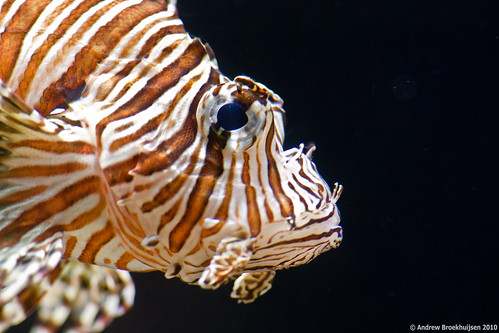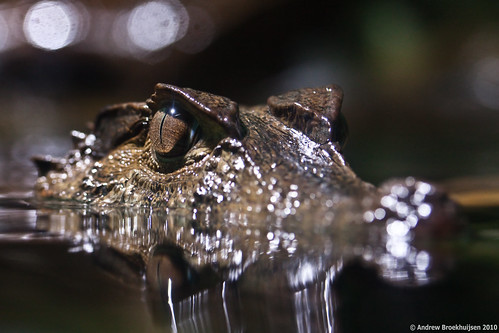Many aspects of my photography still have a "trial & error" approach, but I can't remember the last time I shot so many pictures with such a low percentage of keepers. I think I had 2.5 keepers from the close to 200 shots I took.
Along the way, I learned a few valuable lessons about aquatic photography that I figure I'll pass along to you guys. But first, the pictures.

Aperture: f/2.8
Shutter Speed: 1/160
ISO: 1600
Focal Length: 100mm
Monopod

Aperture: f/4
Shutter Speed: 1/30
ISO: 1600
Focal Length: 100mm
Monopod
The first thing I picked up pretty quickly was that you need support. I am somewhat of a perfectionist with the technical aspects of my photography. Therefore, high ISO settings, motion blur, etc. really bother me. I don't like shooting at ISO 1600 when I can avoid it, but I couldn't here. A tripod really would have been the best choice, but I didn't bring mine. A monopod was a fair tradeoff. Even with really fast glass and a maxed-out ISO setting, I was getting barely usable shutter speeds for most of the aquariums. The other tip I can give you is to use a rubber lens hood. This enables you to support the end of your lens against the glass of the aquarium, giving you a couple of advantages. First, it's another point of support, turning your monopod into a bipod. Second, if you're shooting perpendicular to the glass (more on this later), it blocks out light from the edges and helps prevent glare.
Another important aspect to pay attention to is white balance. The different aquariums all had radically different lighting. Definitely shoot RAW. I left my WB on Sunny and just fixed the keepers later in Lightroom. If you are going to shoot JPG, try a few different settings on each aquarium to see what works best for the image you're trying to achieve.
Focusing was the most frustrating aspect for me to get down during the shoot. There was rarely enough light in the aquariums even for my USM AF drives to lock onto something. I ended up manually focusing most of the time. I was continually finding myself unable to achieve sharp focus at all, even on completely static subjects. Eventually I figured out that any kind of curved glass is likely going to nuke your ability to achieve perfect focus. On aquariums with flat glass, you have to shoot as close to perpendicular through the glass as possible. The steeper the angle you are trying to shoot through, the more the glass is distorting things and it doesn't take long to ruin your ability to achieve perfect focus.
So to sum things up:
-Shoot supported, using a rubber lens hood if possible.
-Pay attention to WB.
-Focus manually whenever necessary.
and
-Shoot through glass at a 90° angle whenever possible.
Happy shooting!


No comments:
Post a Comment
Like what you see? Have a question? Leave me a comment!